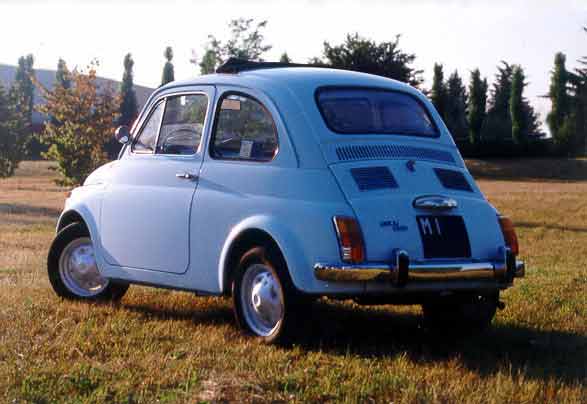|
Times are inexorably changing, legends remain or disappear. Or sometimes they find a honorable place in history. Rarely do they come back to life. To be sure, at least in automotive history., there are few exceptions where only the name remains a connection with legend. Fiat's "Cinquecento" or as it would be said in jargon "the five hundred", was officially presented to the public on since long gone Jun 15th, 1936, under the slogan "the smallest automobile in the world". Of course everything begun few years earlier. As the story goes it all started with this well known sentence " Mr.Giacosa senator Agneli would be glad to have one little economy car which could be sold for 5000 liras. Could you construct such vehicle, including its engine?" This quote dates to 1933. Engineer Giacosa whose name was synonymous with the history of Fiat was 28 years old at that time. He was a planner and constructor of specialized and military vehicles and aircraft engines. To this challenge he responded with an enthusiastically positive answer. And so was marked the beginning of a journey to unknown - serial production of the smallest automobile in the world. Project was named "Zero A", "Zero" in memory of a well known vehicle from the past, and "A" a short for "Aviazione", because the project came to life in a development sector for airplane engines, as early as October 7th, 1934, first prototype appeared and it was able to reach top speed of 82 km/h, exactly as was untocopted in the project. Production soon reached a hundred cars per day. The little car had a 569 ccm, 4 cylinder engine and top speed of 85 km/h., there was enough for two individuals and 50 kg of luggage, and it needed 6 liters of gasoline for every 100 km. It was officially known as "FIAT Cinquecento" and out affection people called it "Topolino" or little mouse. With all duties and taxes it had a price of 8900 lira. Between 1936 and 1938, 122000 Topolinos were manufactured and production continued during the war. The four cylinder - in line engine has 569 ccm (52X67) was capable of 13 HP at 4000 BPM. Engine was installed in line in front of the front axle, transmission had four gears and a rear wheel drive. It had hydraulic brakes for all four wheel and a hand brake for rear wheels. Total car length was 3250 mm. Until 1939 tires mounted were 2,50 D x15, replaced by 3,00 D x 15, also latter replaced by 4,00 D x 15 and 4,50 D x 16. "Cinquecento's" total weight was 510 kg and fuel tank capacity was 21.5 liters. After the war, in 1948, at the car show in Geneva, model "500B" unveiled with a slightly modified body and a new engine where had an increase of three HP and improved top speed of 95 km/h. With a changed body and new mechanics a "500C" debuted in Geneva in 1949 and it remained on production lines until 1955. 376370 of them were made and at that time the price was 625000 lira. A person responsible for a new small car was again Dante Giacosa, when model "Nuova 500" was constructed in 1957, and it had a triumphant success with Italian customers. Even today many "Nuova 500" can be seen cruising around Italian streets and roads. The engine it this newcomer had two cylinders, air cooling, 479 ccm and it was mounted behind the rear axle. It could reach speed of 85 km/h and on average in needed 4,5 liters of fuel for every 100 km. And so come to existeance a new generation which had a soverign rule over the small car segment for the following 18 years. During that time 3678000 of these little cars came off factory lines. A year later, in 1958 a version named "Sport" was launcehed, and it had a removable roof and top speed of 105 km/h. Model "D" showed up in 1960 with an 499 ccm engine, and later in March of 1965 "F" came along; in 1968 "L" (Luxury) and in 1972 the last version "R" (Rinnovata) was presented and it stayed in production until 1975. |








